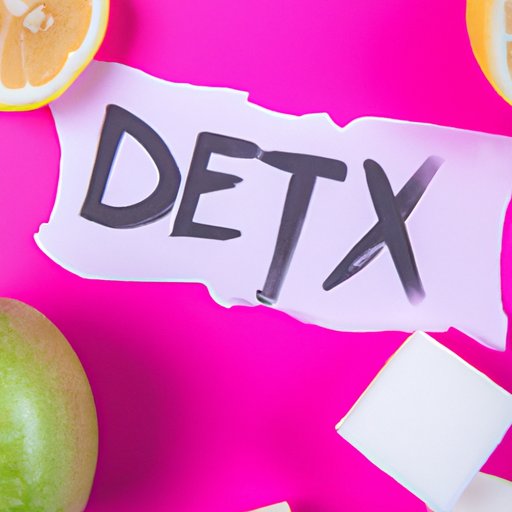
Introduction
The prevalence of sugar addiction is on the rise, with many individuals struggling to cut back on their sugar intake. This not only impacts our health, but can also contribute to a range of chronic illnesses. However, detoxing from sugar can be a challenging process without the right knowledge and tools. In this article, we’ll provide you with actionable steps to help you detox from sugar, and start feeling great!
Step 1: Assess your current sugar intake
The first step to detoxing from sugar is to assess your current sugar intake. This involves taking an honest look at your eating habits, including how much sugar you consume on a daily basis and where the sugar is coming from. Tracking your sugar intake is a great way to get a handle on your habits. Try keeping a food diary or using a tracking app to monitor your progress.
Step 2: Plan your sugar detox
Once you’ve assessed your sugar intake, it’s time to create a plan of action for your detox journey. Setting specific goals for your sugar detox can help keep you motivated and on track. Consider factors like how long you’d like to detox, the level of support you’ll need, and coping mechanisms you can utilize when cravings arise.
Step 3: Start with a sugar fast
A sugar fast involves cutting out all forms of sugar from your diet for a period of time. This can help jumpstart your detox process, and can also help reset your taste buds so that you’re less likely to crave sugar in the future. When starting a sugar fast, it’s important to gradually reduce your sugar intake in the weeks leading up to it. This will help minimize any unpleasant withdrawal symptoms, like headaches or fatigue. Come up with a list of healthy snacks and meals you can have on hand during your fast to prevent any unnecessary cravings.
Step 4: Focus on whole, nutritious foods
After completing a sugar fast, it’s important to focus on incorporating whole, nutritious foods into your daily diet. Not only are these foods better for your overall health, but they also contain less sugar. Aim for a diet that includes a variety of fresh fruits, vegetables, lean proteins, and healthy fats. Don’t be afraid to try new foods and recipes to keep things exciting!
Step 5: Incorporate physical activity
Regular exercise is an important aspect of sugar detox, as it can help regulate blood sugar levels and decrease sugar cravings. Try to incorporate physical activity into your daily routine, whether it’s through a structured workout or simply taking the stairs instead of the elevator. Engaging in activities you enjoy can help make it easier to stick to a regular exercise routine.
Step 6: Address emotional triggers
Emotional triggers, like stress or boredom, can be a major contributor to sugar addiction. These triggers can be difficult to identify and manage, but developing coping mechanisms is an important part of sugar detox. Try mindfulness practices, like meditation or journaling, to help manage your emotional triggers. If you find your emotional triggers difficult to address on your own, consider seeking the help of a mental health professional.
Step 7: Monitor progress and adjust as needed
Finally, it’s important to track your progress throughout your sugar detox journey. This will help you identify areas that may need improvement, as well as celebrate your successes along the way. Use tools like tracking apps or journals to keep yourself accountable, and don’t be afraid to adjust your plan as needed to ensure your continued progress.
Conclusion
Detoxing from sugar can be a challenging process, but with the right tools and support, it’s possible to kickstart your health and feel great. By assessing your current sugar intake, creating a personalized detox plan, focusing on whole, nutritious foods, incorporating physical activity, addressing emotional triggers, and monitoring your progress, you can begin to break free from sugar addiction and experience the benefits of a healthy, balanced lifestyle.





